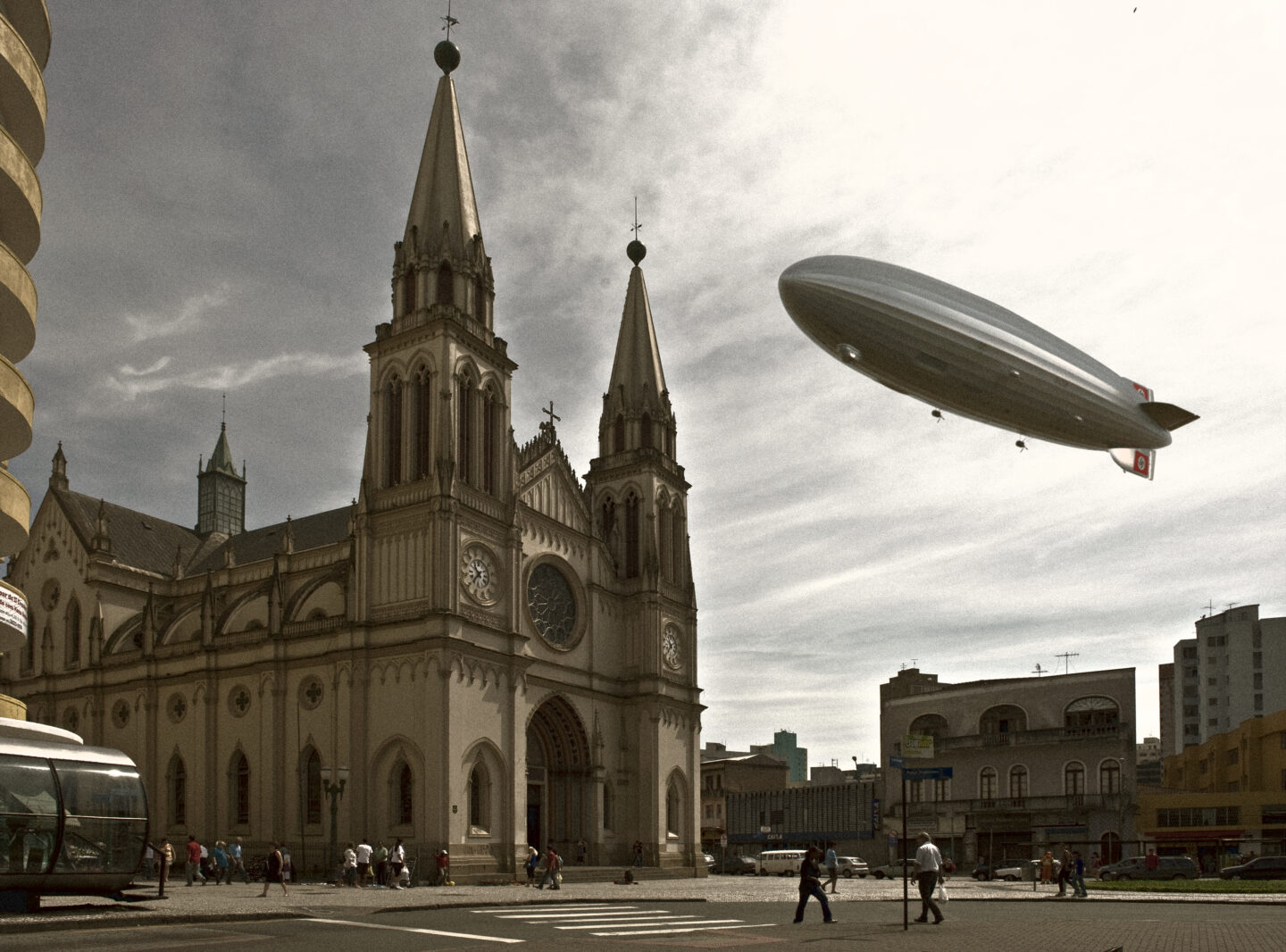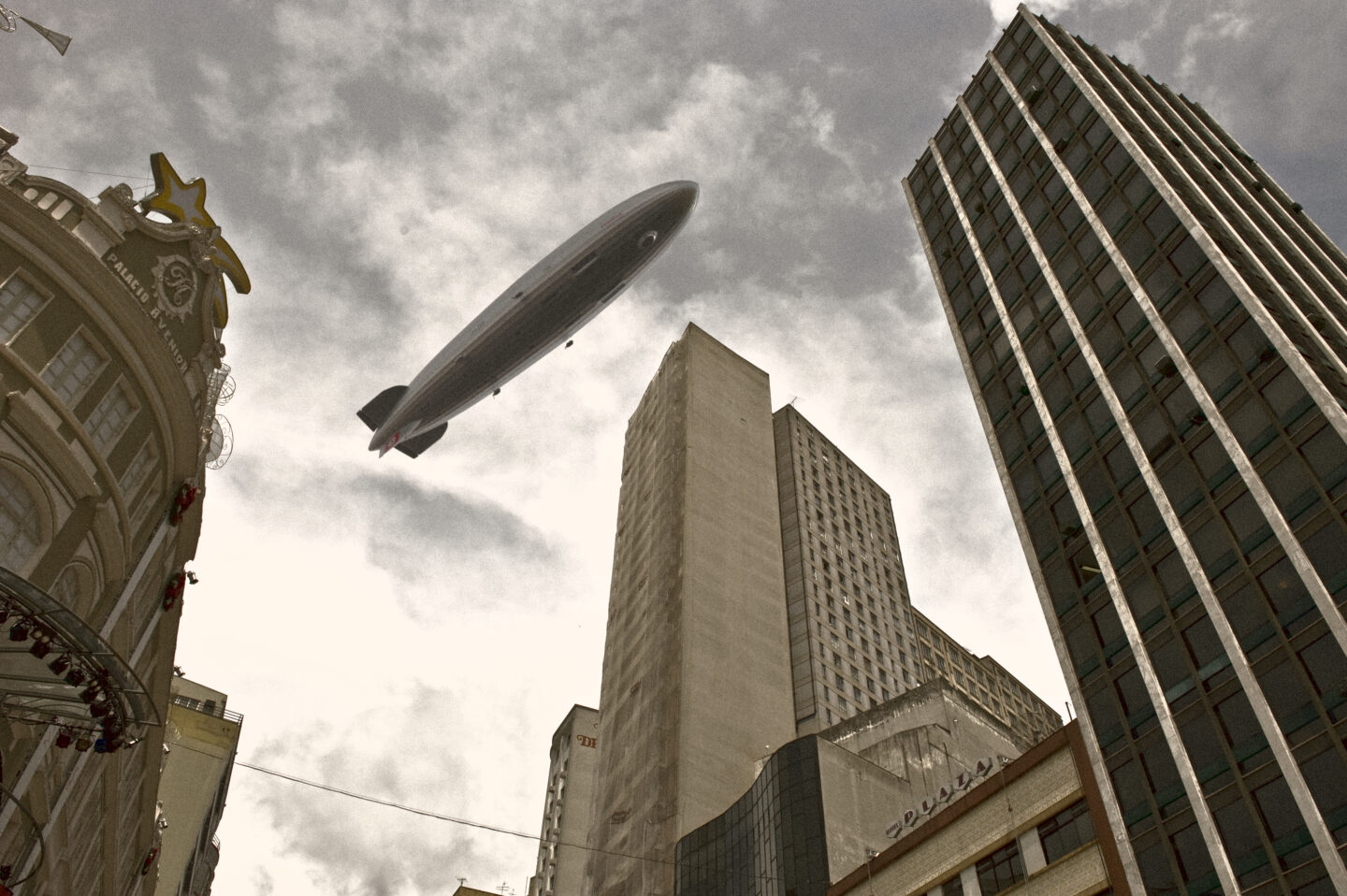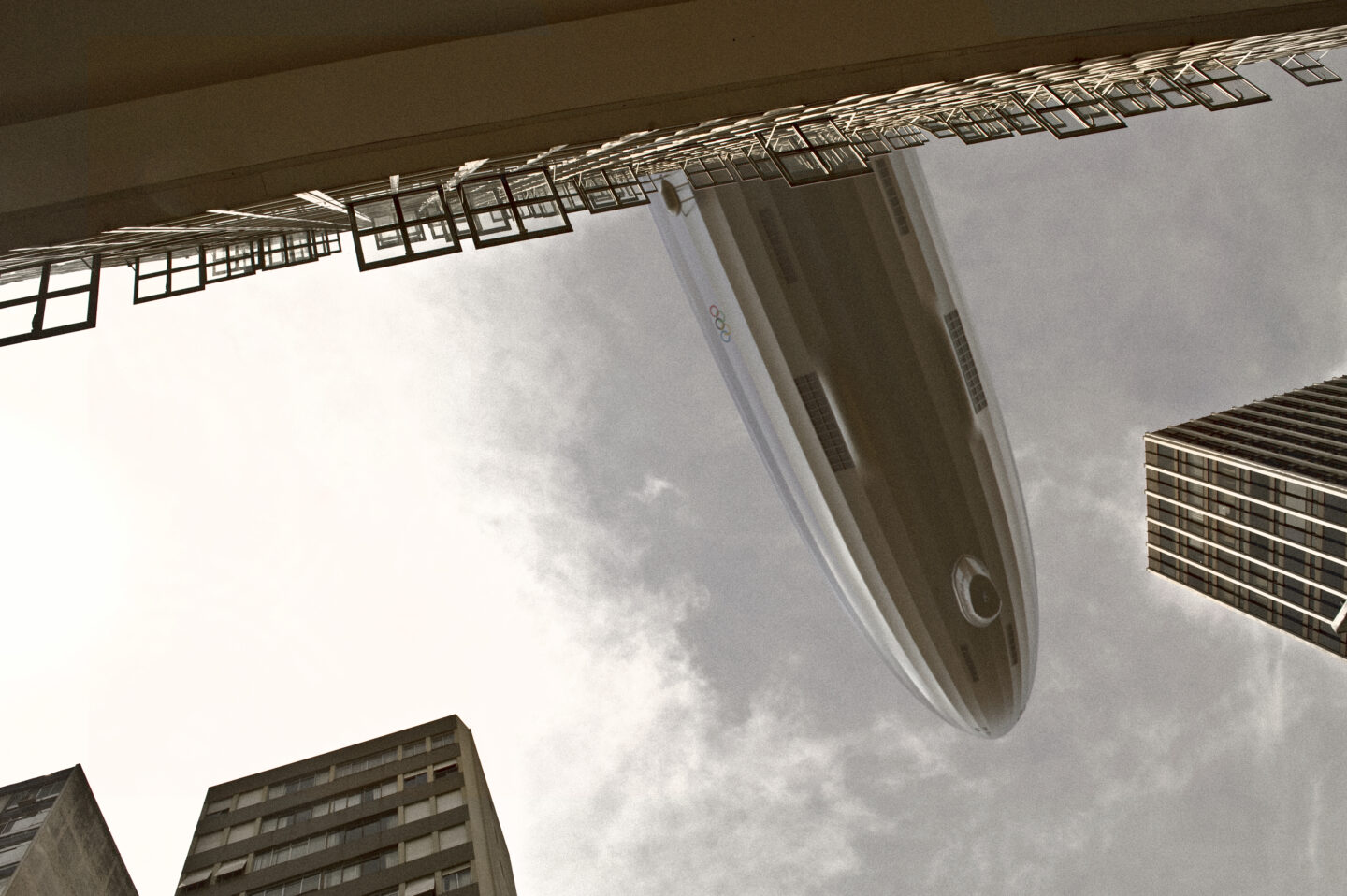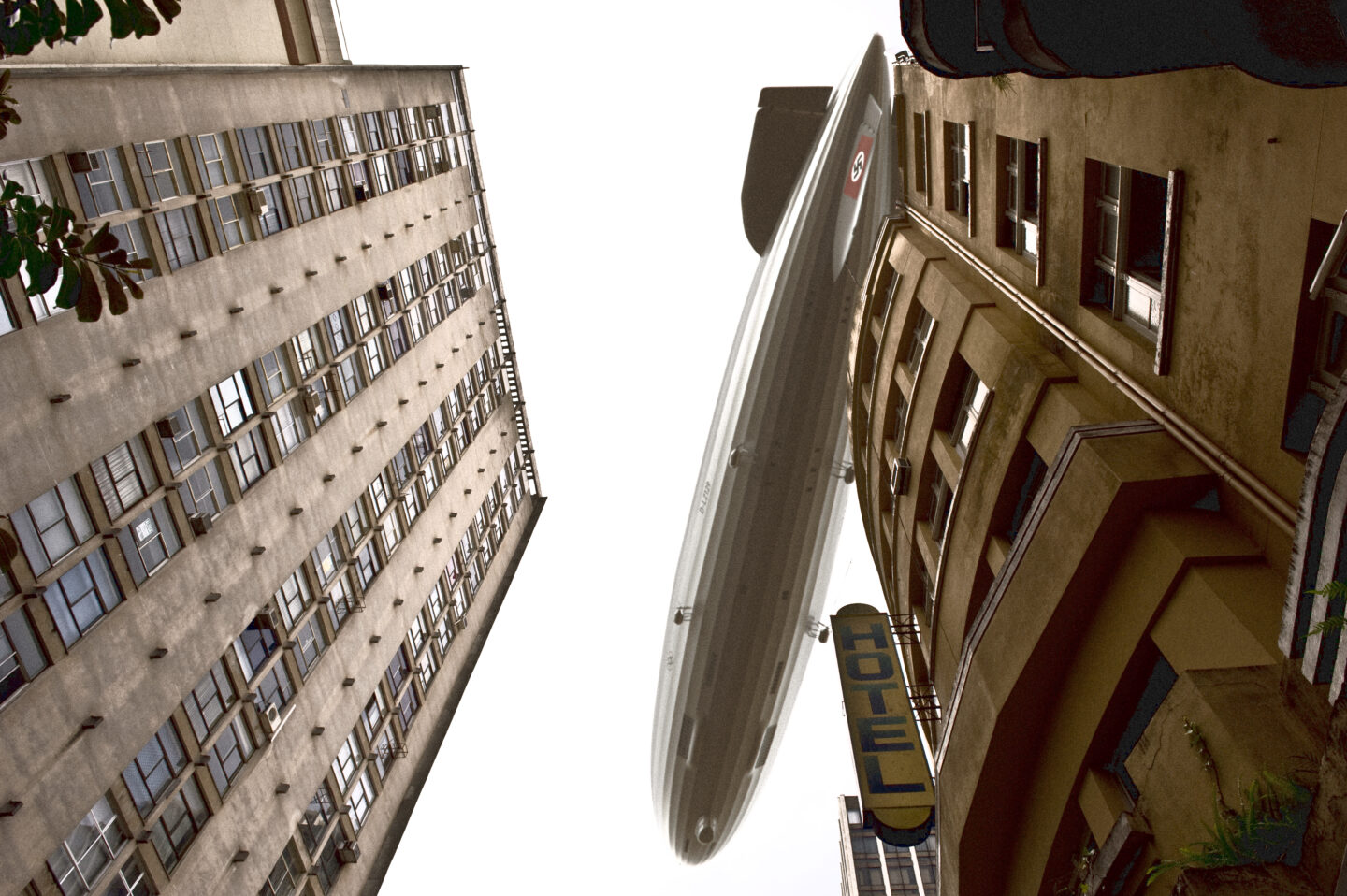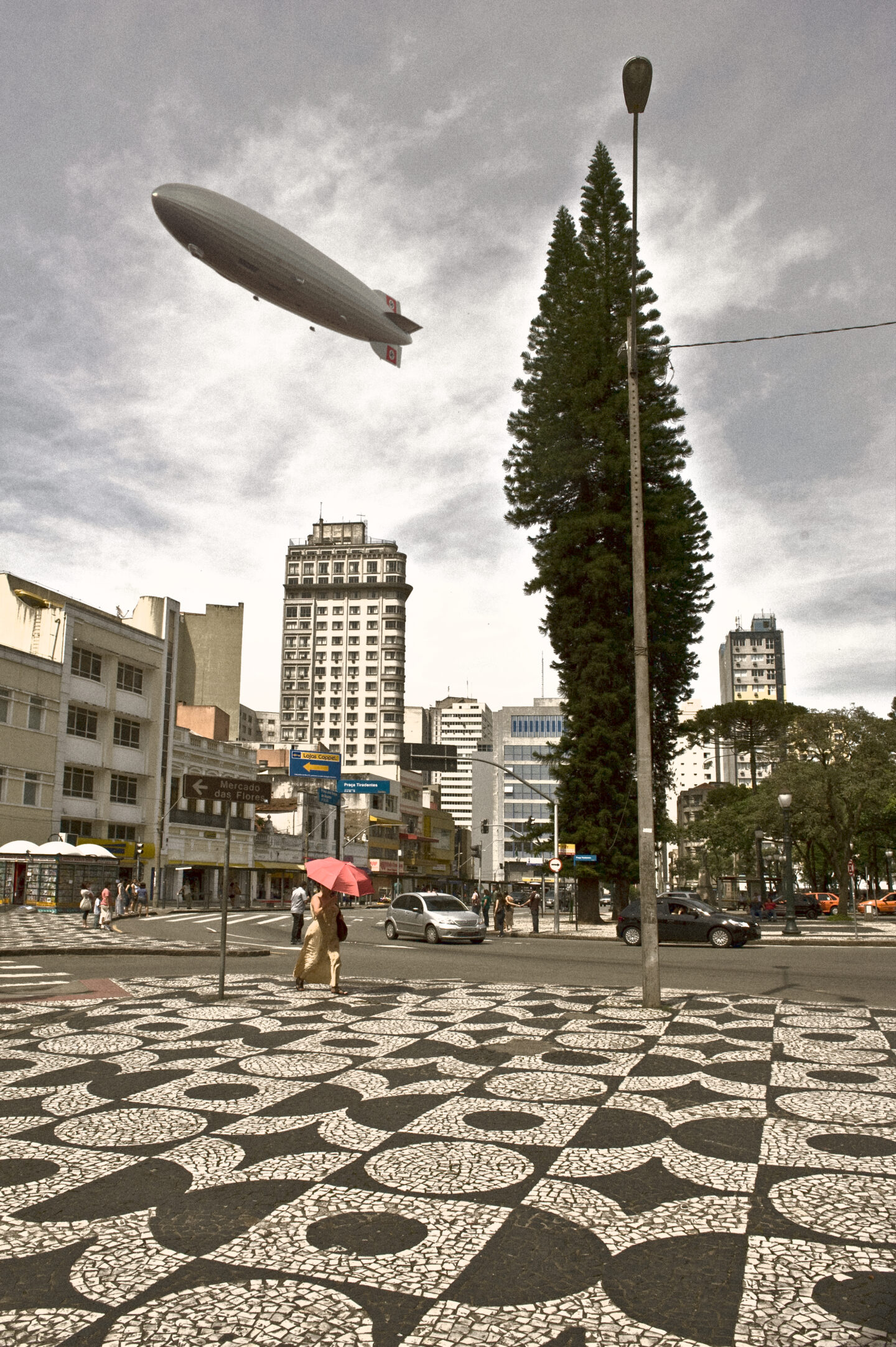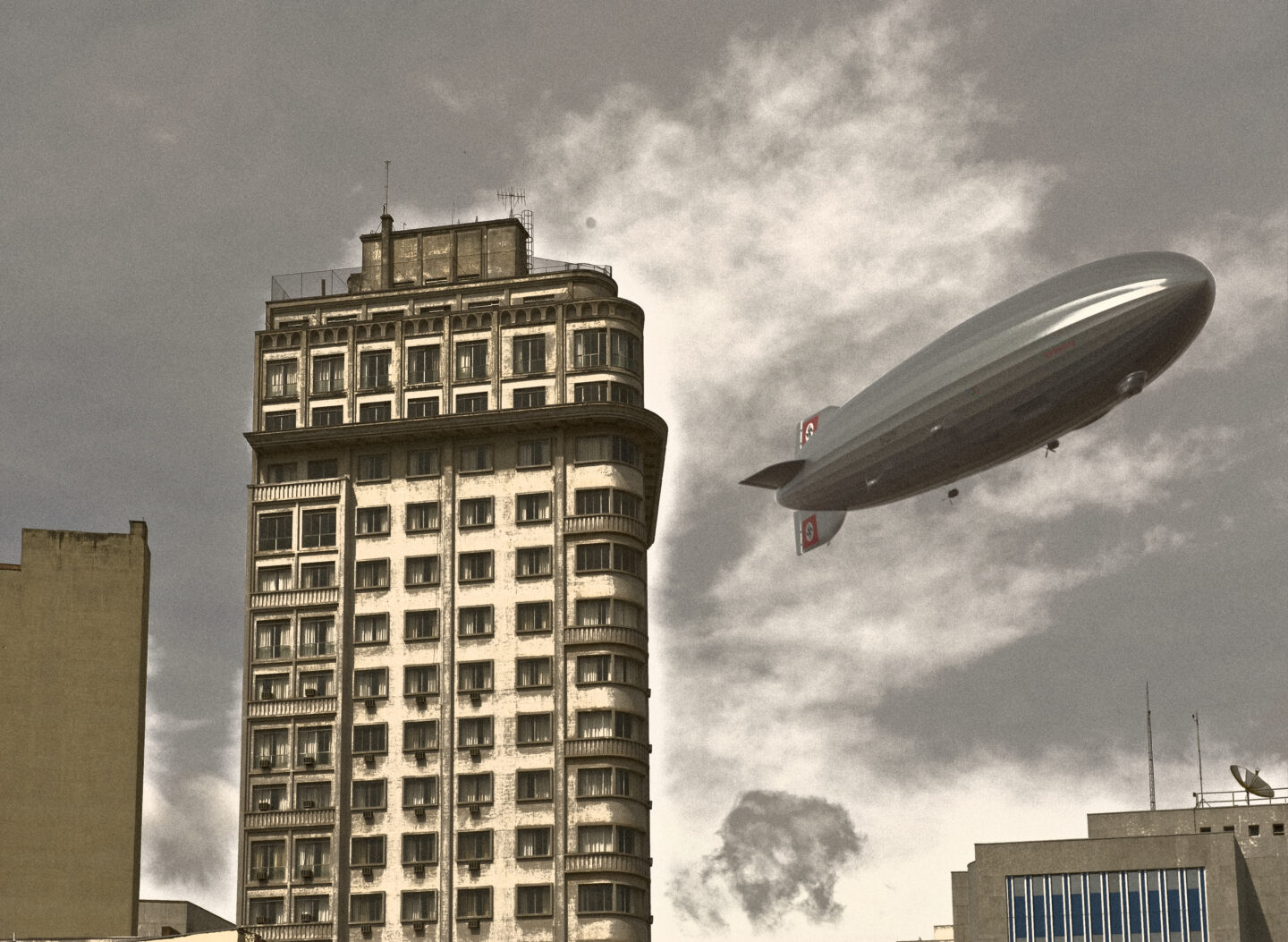Two Days from Europe
September 17 - November 20, 2011,
public project [unrealized], photomontage
6th Curitiba Biennial, Brazil
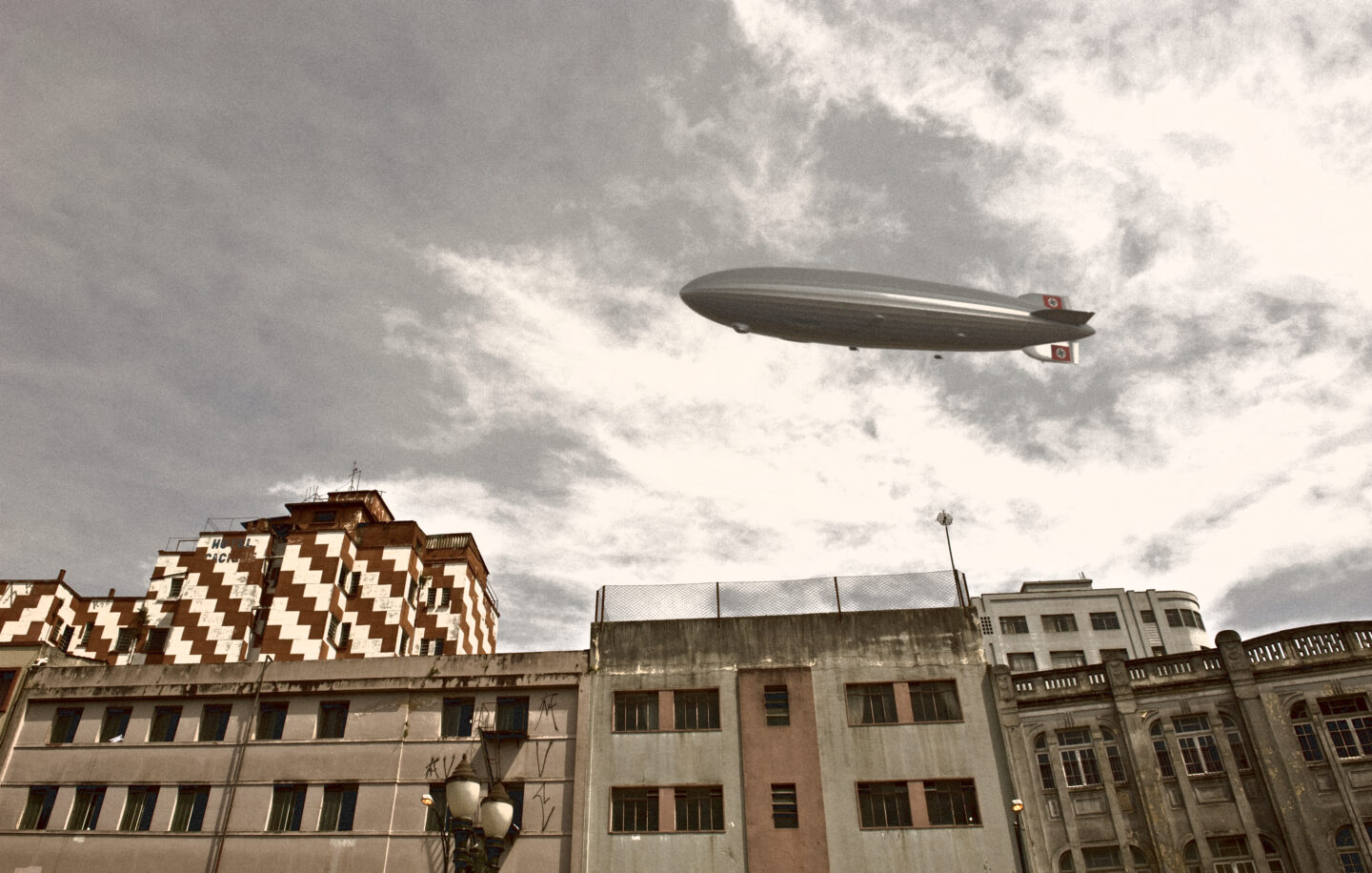
Two Days from Europe was a project about breaking relations with Europe, especially with its rightist political tradition based on national values; about a new, desired model of politics not based on European model, about political emancipation, about what is rather “here and now” than what it was “there and then”.
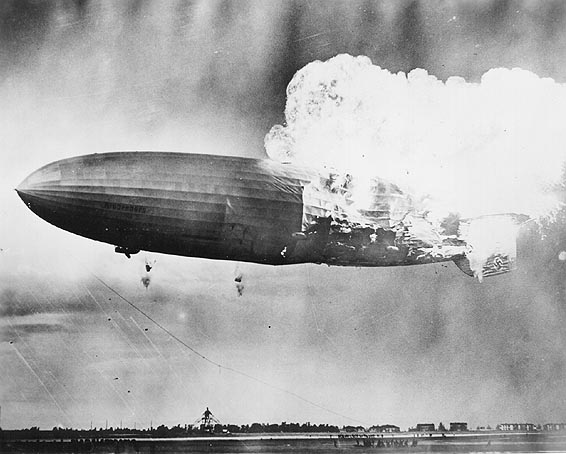 The crash of zeppelin “Hindenburg” put an end to the history of the airships. It was also an end of the routine zeppelin flights between Europe and Brazil.
The crash of zeppelin “Hindenburg” put an end to the history of the airships. It was also an end of the routine zeppelin flights between Europe and Brazil.
The crash took place on the 6th of May 1937, 2 years before the beginning of the Second World War, 2 years after announcing the Nuremberg Laws and 1 year before the first act of the aggressive international expansion, which was annexation of Austria.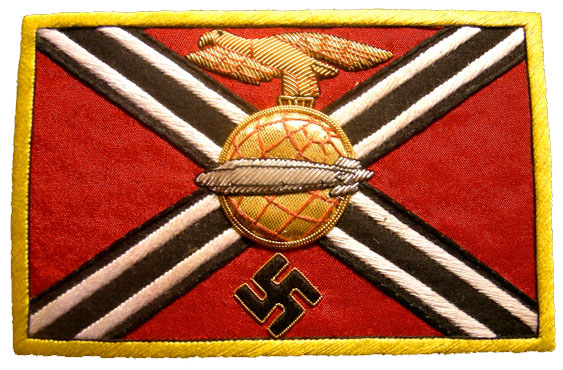 Zeppelin Hindenburg was a pride of Nazi Germany. It was the largest airship ever built: 245m long with the volume of 200 000 cubic meters. It was in use for 14 months, from March 1936 on, up to the moment of the crash. Hugo Eckener, the commander of the zeppelin, named it “Hindenburg” in the honour of the former President of Germany, Paul von Hindenburg. It made furious the Third Reich propaganda minister, Joseph Goebbels, who tried to force Eckener to rename it to “Adolph Hitler”. After the first trial flight, which was in fact the Nazi propaganda flight, during which the flyers with Hitler’s speech were distributed, “Hindenburg” set off for its first transatlantic flight to Rio de Janeiro. In 1936 “Hindenburg” went on commercial tours to Brazil 7 times and this was exactly then, when it showed up over Curitiba. In 1937 it made another flight to South America and it exploded near the Naval Air Station in Lakehurst, New Jersey, in the United States, killing 36 people.
Zeppelin Hindenburg was a pride of Nazi Germany. It was the largest airship ever built: 245m long with the volume of 200 000 cubic meters. It was in use for 14 months, from March 1936 on, up to the moment of the crash. Hugo Eckener, the commander of the zeppelin, named it “Hindenburg” in the honour of the former President of Germany, Paul von Hindenburg. It made furious the Third Reich propaganda minister, Joseph Goebbels, who tried to force Eckener to rename it to “Adolph Hitler”. After the first trial flight, which was in fact the Nazi propaganda flight, during which the flyers with Hitler’s speech were distributed, “Hindenburg” set off for its first transatlantic flight to Rio de Janeiro. In 1936 “Hindenburg” went on commercial tours to Brazil 7 times and this was exactly then, when it showed up over Curitiba. In 1937 it made another flight to South America and it exploded near the Naval Air Station in Lakehurst, New Jersey, in the United States, killing 36 people.
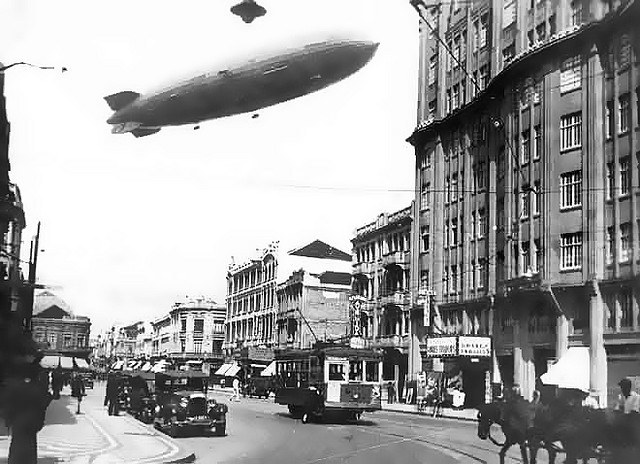 “Hindenburg” was seen over Curitiba in the places crucial for the community life, e.g. over the main market. Its appearance had to be deeply symbolic for the city, as it was a symbol of communication with Europe, a communication that was fast, easy and expensive (the ticket were sold for $400 – which was about US $6,300 in 2010), so it was reserved only for very wealthy passengers.
“Hindenburg” was seen over Curitiba in the places crucial for the community life, e.g. over the main market. Its appearance had to be deeply symbolic for the city, as it was a symbol of communication with Europe, a communication that was fast, easy and expensive (the ticket were sold for $400 – which was about US $6,300 in 2010), so it was reserved only for very wealthy passengers.
What’s more, it represented Europe in Nazi fever, Europe overwhelmed by the deep moral crisis, ready for the next, devastating war.
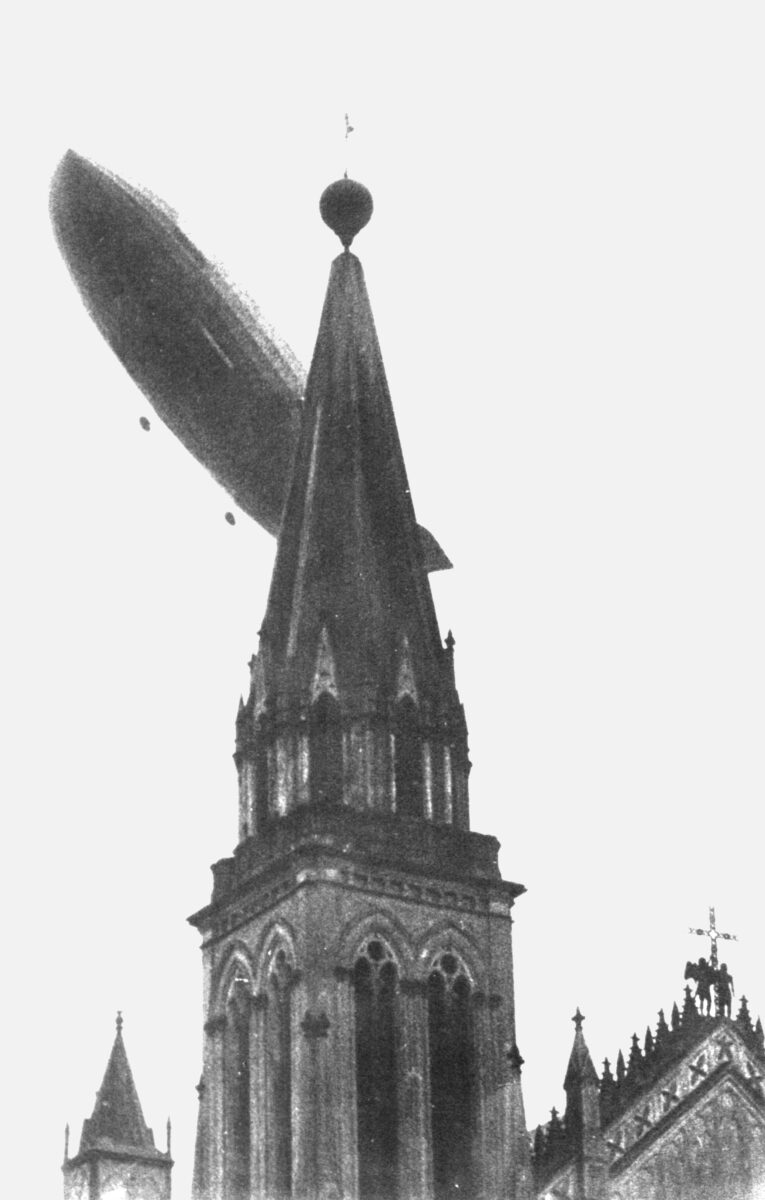
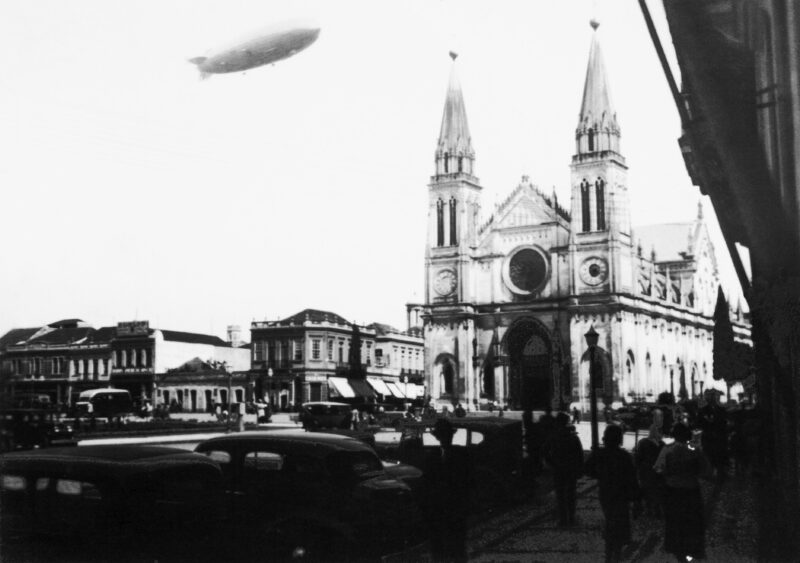 Curitiba, colonized by the Portuguese at the beginning of XVI century was a city, which experienced a sudden economic boom in the beginning of XX century due to increasing emigration from Europe – mainly from Germany, Italy and Poland. The European culture had been a dominant culture. Till now, the descendants of the European emigrants, despite of the fact that they don’t speak their mother tongue, are very proud of their European surnames and they celebrate, usually quite blurred, memory of the country of their origin. The indigenous culture has remained the folk, colonized culture only, and hasn’t played any role in the leading, official discourse.
Curitiba, colonized by the Portuguese at the beginning of XVI century was a city, which experienced a sudden economic boom in the beginning of XX century due to increasing emigration from Europe – mainly from Germany, Italy and Poland. The European culture had been a dominant culture. Till now, the descendants of the European emigrants, despite of the fact that they don’t speak their mother tongue, are very proud of their European surnames and they celebrate, usually quite blurred, memory of the country of their origin. The indigenous culture has remained the folk, colonized culture only, and hasn’t played any role in the leading, official discourse.
What Europe brought to Curitiba, apart from the civilization jump, are all catastrophic results of the Euopean ‘project’: colonialism, discrimination, exploitation and the disregard for the indigenous cultures.The break from the European political thought seems to be crucial for the advancing of the political and economical emancipation of Brazil. In this context the zeppelin crash seems to be a symbolic act.
